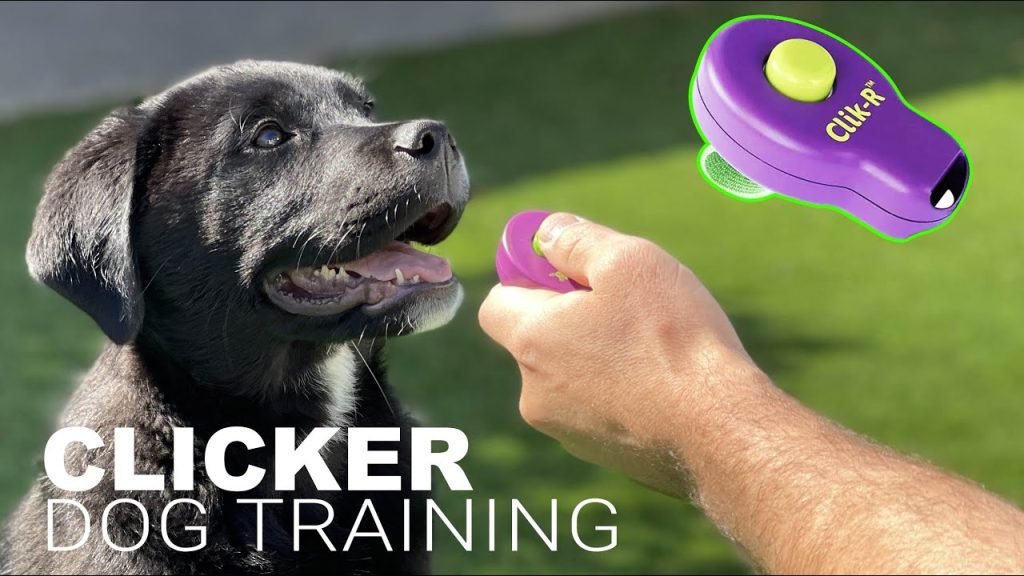Positive Training Techniques: How to Teach Desirable Behaviors to Pets

Unleashing Potential with Positive Training
Training your pet can be a transformative journey, filled with laughter and joy. By using positive training techniques, you can foster desirable behaviors while deepening the bond with your furry friend. This innovative approach focuses on rewarding good behavior rather than punishing undesirable actions, paving the way for a harmonious relationship.
Why Choose Positive Training?
Positive reinforcement has gained traction among pet owners and trainers for various reasons:
- Strengthens bond: The essence of positive training lies in trust. When you reward your pet for demonstrating desirable behaviors, you cultivate a genuine connection that enhances your relationship. For instance, giving your dog a treat for sitting on command not only engages them but also reinforces the idea that they can rely on you for positive feedback.
- Encourages learning: Pets are more likely to repeat behaviors that earn them rewards. For example, if your cat learns that using a scratching post results in a tasty treat, they are more inclined to choose that option over the furniture. This method helps instill loyalty to appropriate behaviors.
- Reduces anxiety: Positive training avoids the negative side effects often associated with fear-based training methods. Dogs trained with aversive techniques are more prone to fear, aggression, and stress-related behaviors. In contrast, a pet trained in a calm, positive environment can approach new situations with confidence.
Many methods fall under the umbrella of positive training, including clicker training, reward-based approaches, and socialization techniques. Clicker training, for instance, involves using a click sound to mark a moment of good behavior, followed by a reward. This helps your pet associate the click with a positive outcome, promoting faster learning.
Getting Started
Embarking on your training journey involves patience and consistency. First, assess your pet’s unique motivators, such as treats, favorite toys, or verbal praise. Each pet is different; a gentle, affectionate cat might thrive on loving words, while an energetic dog could respond better to energetic play. Understanding what excites your pet is crucial to successful training.
To start, establish a set routine for training sessions. Short, frequent sessions—typically lasting about 5 to 10 minutes—are ideal, as they maintain your pet’s attention and enthusiasm. Begin with simple commands, such as “sit,” “stay,” or “come.” Celebrate each small success, gradually increasing the complexity of the behaviors as your pet progresses.

Are you ready to discover how to effectively implement positive training techniques that not only teach good behavior but also create a joyful environment for you and your pet? The journey may be filled with challenges, but the rewards are immeasurable. By promoting a positive atmosphere, you ensure your pet feels secure and motivated to learn, making every interaction a building block for a better future together.
DISCOVER MORE: Click here for effective training tips
Essential Techniques for Effective Positive Training
When embarking on a journey to teach your pet desirable behaviors, it’s vital to embrace various positive training techniques that can cater to your pet’s individual needs. While the ultimate goal is to impart essential commands and behaviors, the methodology you choose can significantly impact the outcome and your pet’s well-being. Understanding the principles behind these techniques will set the stage for successful interactions.
Core Principles of Positive Training
At the heart of positive training is the concept of rewarding desired behaviors instead of focusing on punishment for undesirable actions. Here are several foundational principles that help to create an effective training experience:
- Immediate Reward: To reinforce a behavior effectively, timing is crucial. Always provide a reward immediately after your pet performs the desired action. This direct association helps your pet link the behavior to a positive outcome, solidifying their understanding.
- Consistency is Key: Pets thrive on routine. Maintain consistency in commands, cues, and rewards. Using the same verbal command for ‘sit’ or the same hand signal ensures that your pet recognizes what you expect of them.
- Keep It Positive: Emphasize positive language and environment, even during setbacks. Using an encouraging tone and avoiding frustration will help your pet feel safe and motivated to learn, reinforcing their confidence.
- Gradual Progression: Start with basic commands and progressively introduce more complex behaviors. Building on successes establishes a sense of achievement for both you and your pet.
Another popular method is the clicker training technique, a transformative tool in the realm of positive reinforcement. The clicker—a small handheld device that makes a distinct clicking sound—serves as a marker of good behavior. By using a clicker along with treats, you create a strong association in your pet’s mind, making training sessions effective and engaging.
Creating an Ideal Training Environment
Setting up a conducive environment for training is just as critical as the techniques employed. A space devoid of distractions ensures that your pet can fully focus on you and the training session. Consider these tips to enhance your training environment:
- Minimize Distractions: Train in a quiet space away from outside noises and other animals. This allows your pet to concentrate without being sidetracked.
- Use High-Value Treats: Choose rewards that your pet truly loves. High-value rewards, such as small pieces of cooked chicken or special treats, tend to get better results.
- Schedule Regular Sessions: Consistency is a cornerstone of effective training. Plan for short, engaging sessions at the same time each day to help your pet understand when to expect training.
As you embark on this training adventure, remember that patience is your greatest asset. Each pet learns at their own pace, and celebrating small victories is crucial to keeping motivation levels high. With the right approach and mindset, positive training can transform both your pet’s behavior and the dynamics of your relationship, establishing a joyful and trust-filled companionship.
| Advantage | Description |
|---|---|
| Strengthens Bond | Positive training techniques foster a deeper relationship between pets and their owners, enhancing trust and communication. |
| Improves Behavior | Using methods like clicker training results in clear and effective communication, leading to desired behavior in pets. |
| Less Stressful | Positive reinforcement reduces anxiety in both pets and owners, creating a more relaxed training environment. |
| Enhances Learning | Consistent rewards for desired actions encourage pets to learn quicker and retain new skills effectively. |
As pet owners explore the world of training, they may be amazed to find that this approach yields more than just obedient pets; it creates a fulfilling experience for both. Techniques like positive reinforcement, clicker training, and creating a structured environment not only reduce negative behaviors but ignite a curiosity in pets, encouraging them to engage in learning. The simplicity of rewarding good behavior leverages built-in instincts and creates a memorable journey of growth. For those interested in delving deeper into the continuum of positive training methods, a wealth of resources awaits, promising to transform the lives of pets and their owners alike.
DISCOVER MORE: Click here to learn about daily routines and your cat
Advanced Positive Training Techniques for Lifelong Learning
Once the foundational principles of positive training are firmly established, it’s time to delve into more advanced techniques that can further enrich your pet’s learning experience. These methods not only enhance your pet’s repertoire of skills but also fortify the bond between you and your furry friend. By integrating a variety of approaches, you can create a dynamic training regimen that keeps both you and your pet engaged and motivated.
Using Lure and Reward Techniques
The lure and reward technique is an excellent method for teaching specific behaviors, especially when introducing your pet to new commands or tricks. This technique involves guiding your pet through the desired action with a reward, creating a clear pathway to success. For example, to teach your dog to lie down, you can use a treat to lure them into the position. Once their body is on the ground, immediately reward them with the treat and praise. Over time, the pet learns to associate the command with the action and reward.
Incorporating Target Training
Target training takes the concept of luring one step further, encouraging your pet to touch or follow a specific object, like your hand or a stick. This technique is particularly beneficial for pets that may be less responsive to verbal commands. By guiding them to touch a target, they begin to learn more complex movements and positions. For instance, a dog can be taught to go to their bed by targeting a stick held at its location. This method not only teaches desirable behaviors but also provides mental stimulation as your pet engages with the target.
Socialization and Real-World Training
Socialization is a crucial aspect of training that supports positive behaviors in various environments. Exposing your pet to different people, animals, and settings increases their comfort level and reduces anxiety over time. For example, if you have a puppy, consider enrolling them in a puppy kindergarten class where they can socialize with other young dogs. Such experiences can dramatically enhance your pet’s adaptability, leading them to be more responsive to training commands even in distracting environments.
Furthermore, implementing training techniques during real-world outings—like walks or trips to the park—allows your pet to practice commands in context. Encourage your pet to “sit” before crossing the street or “stay” when meeting a new friend. This practical application reinforces behaviors and builds a solid foundation for obedience in everyday situations.
Engaging in Trick Training for Better Focus
Teaching your pet tricks is not only a great way to bond but also helps channel their mental energy into productive learning. Tricks like “roll over” or “play dead” require concentration and engagement, ultimately leading to increased focus. Challenge your pets with varying levels of difficulty; for instance, once they master basic tricks, you can introduce more complex sequences that require multi-step actions. This progressive approach maintains their interest in training and continually builds skill.
The Power of Group Classes and Online Resources
For those seeking more structured guidance, group training classes serve as a fantastic resource. Here, professionals provide expert advice while your pets socialize with others. Alternatively, online platforms and videos offer a wealth of information on advanced positive training techniques that you can implement at home. Seek out reputable sources, ensuring that methods align with the principles of positive reinforcement.
By diversifying your training techniques and consistently engaging your pet through positive experiences, you contribute to their behavioral development while fostering a lifelong partnership built on trust and understanding. Embrace the journey, as it promises to be as rewarding for you as it is for your beloved pet.
DIVE DEEPER: Click here to learn more about balanced nutrition for your pet
Conclusion: Embracing Positive Training for a Harmonious Pet Relationship
In summary, positive training techniques offer a compassionate and effective approach to teaching desirable behaviors to pets. By utilizing methods such as lure and reward, target training, and incorporating socialization, pet owners can foster an enriched learning environment that not only enhances their pets’ skills but also strengthens the emotional bond between them. The emphasis on positive reinforcement aligns with an understanding that encouraging good behavior leads to happier, more confident animals.
Furthermore, engaging in trick training and utilizing group classes can provide valuable mental stimulation while equipping pets with practical skills needed in real-life scenarios. Pet owners are encouraged to explore a variety of resources, both in-person and online, to continually learn and implement new techniques. Remember, each pet is unique, and adjustments may be necessary to tailor training approaches to an individual’s personality and learning style.
Ultimately, the journey of training doesn’t conclude with obedience; rather, it evolves into a long-lasting partnership built on trust, joy, and mutual respect. As you navigate this rewarding process, consider viewing every training session as an opportunity to connect with your pet, fostering a more enriching life together. The dedication you give today will pave the way for a well-adjusted and well-behaved companion for years to come.


